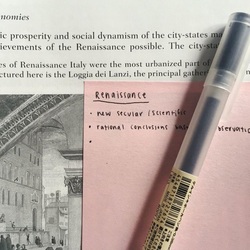PROJECT BRIEF - RESEARCH PRESENTATION 2 - INTRODUCTION, LITERATURE REVIEW, METHODOLOGY
The final presentation guidelines for RESEARCH PRESENTATION 2 are taken from:
Cottrell, S. (2008) The study skills handbook. 3rd edn. Basingstoke: Palgrave Macmillan, p.107.
Cottrell, S. (2008) The study skills handbook. 3rd edn. Basingstoke: Palgrave Macmillan, p.107.
22222222222222222222
1. WHAT? (tell us about about your beginnings of research for the CRITICAL RESEARCH REPORT...)
- RESEARCH PRESENTATION 2 - INTRODUCTION, LITERATURE REVIEW, METHODOLOGY is an illustrated verbal presentation of work so far for the CRITICAL RESEARCH REPORT.
- This presentation should focus on the subject matter and theoretical perspective to be identified in the INTRODUCTION, LITERATURE REVIEW and METHODOLOGY of the CRITICAL RESEARCH REPORT.
See
PROJECT BRIEF - CRITICAL RESEARCH REPORT
PROJECT BRIEF - ANNOTATED BIBLIOGRAPHY PROJECT BRIEF - LITERATURE REVIEW
for more information...
RESEARCH PRESENTATION 2 should include
- in-text citations and quotations from your secondary research
- examples from your ANNOTATED BIBLIOGRAPHY taken from your REFLECTIVE JOURNAL
- REFERENCE LIST (Harvard) for in-text citations and quotations (it does not need to include your full BIBLIOGRAPHY of research)
What is the difference between a reference list and a bibliography?
See the REFERENCING pages plus referencing software
https://www.mendeley.com
http://www.neilstoolbox.com/bibliography-creator/
(student recommended) for more information ...
https://www.mendeley.com
http://www.neilstoolbox.com/bibliography-creator/
(student recommended) for more information ...
- The presentation should last 10-15 minutes with 1 slide every 2-3 minutes = 6-8 slides (not including REFERENCES).
MATHS ALERT ... DIVISION!
What is division?
Division is often the most confusing of all the basic maths functions. The language can be even more baffling than it was for multiplication: '3 into 2 won't go', 'divided by', 'over', 'shared between'. Just how important is long division and why does it cause everyone such problems? ...
Someone once said 'Anyone who has done two ling divisions in their life has done one too many.'
You might like to think about when you last had to do a long division, other than when helping out with homework! Australia dropped long division from its curriculum many years ago and no one seems to have missed it. In the UK it is still regarded as the pinnacle of primary maths by some people, so it's likely to be around for a while...
Children are still being taught long division, but before they get to the standard method, they may well learn a method that is based on subtraction, or chunking. (Eastway and Askew, 2015, pp.147-60).
Not to be confused with Joy Division
MATHS ALERT OVER
2. HOW? (structure and presentation... )
RESEARCH PRESENTATION 2 should follow this structure
- The INTRODUCTION should include the research subject and theoretical perspective. It should introduce your research angle or question.
Two examples of introductions
The subject of this paper, Elizabeth Churchill Webb (1817-1884), is not familiar to many. She was an early convert to the Church and the first wife of wainwright Chauncey Webb (1812-1903), whose Nauvoo Wagonry played a crucial role in the Exodus (1846-1847). Brigham Young personally chose Chauncey to lead the wagon manufacturing for the Pioneers in their trek to Zion.
My interest in Elizabeth Webb, however, has less to do with her role in supporting her husband during this historic period. Instead, I am more curious about her relationship to her daughter, Ann Eliza, who would go on to become Brigham Young’s infamous 19th wife.' (Ebershoff, 2009, p.135).
I wrote this paper for three reasons. One, to show the effects of plural marriage on one woman’s life …
The secondary purpose of this paper has been to raise up the the subject of polygamy as a legitimate and unfinished topic of inquiry for LDS scholars and writers …
My last reason is more personal. I am the great-great-granddaughter of Ann Eliza Young. (Ebershoff, 2009, pp.157-9).
- The LITERATURE REVIEW should include a survey of the major secondary research (books, articles, newspapers etc) looked at so far. It should refer to key texts from your ANNOTATED BIBLIOGRAPHY posts in your REFLECTIVE JOURNAL. Include in-text citations and quotations.
See my BCOT REFLECTIVE JOURNAL for examples of my ANNOTATED BIBLIOGRAPHY
http://bcotreflectivejournal.tumblr.com
http://bcotreflectivejournal.tumblr.com
- The METHODOLOGY should explain your research process regarding your secondary research plus any ideas for primary research (if relevant).
- Include a REFERENCE LIST at the end. This is not included in the slide count and is different to your ANNOTATED BIBLIOGRAPHY which appears as part of the presentation.
RESEARCH PRESENTATION 2 should follow these final presentation guidelines
- PowerPoint (or equivalent) - 6-8 slides (not including the REFERENCE LIST)
- Large text: at least 32 point
- Avoid flashy graphics and animation - unless it is really particularly effective or relevant
- Print up the PowerPoint to assist your presentation
3. WHY? (learning outcomes...)
The learning outcomes which are important for the assessment of RESEARCH PRESENTATION 2 are in bold underlined
- To self-manage ongoing independent academic research on subjects of personal interest within fashion and textiles.
- To show understanding of the relationship between academic research and studio practice.
- To show knowledge of the historical, technical and social development of post-industrial fashion and textiles.
- To show awareness of theoretical issues within fashion and textiles.
- To present research (secondary and original) in an academic form (written and verbal) conforming to academic conventions (Harvard reference system).
- To show analysis and evaluation of research.
4. WHEN? (hand in ... )
- BA3 = October 2016
5. ASSESSMENT
The RESEARCH PRESENTATION 2 - INTRODUCTION, LITERATURE REVIEW, METHODOLOGY will be assessed on
- SELF-MANAGEMENT - personal organisation
- THEORY - identification of theoretical perspective
- ANALYSIS and EVALUATION - comprehension and critical awareness of key texts (ANNOTATED BIBLIOGRAPHY and LITERATURE REVIEW)
- REFERENCING AND PRESENTATION - Harvard referencing and final presentation
REFERENCES
Cottrell, S. (2008) The study skills handbook. 3rd edn. Basingstoke: Palgrave Macmillan, p.107.
Eastway, R. and Askew, M. (2013) Maths for mums and dads. Revised edn. London: Square Peg.
Ebershoff, D. (2008 [2009]) The 19th wife. London: Black Swan. 2009.
Cottrell, S. (2008) The study skills handbook. 3rd edn. Basingstoke: Palgrave Macmillan, p.107.
Eastway, R. and Askew, M. (2013) Maths for mums and dads. Revised edn. London: Square Peg.
Ebershoff, D. (2008 [2009]) The 19th wife. London: Black Swan. 2009.





